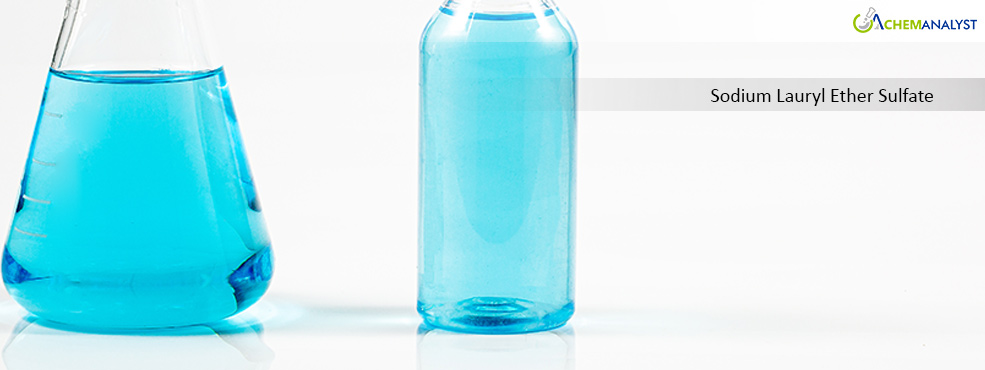SLES Prices Dip in Asia and North America Amid Economic Uncertainties, Europe Bucks the Trend
- 19-Feb-2025 5:00 PM
- Journalist: Xiang Hong
Global SLES market prevailed divergent market trends during the inaugural week of February 2025, owing to fluctuating demand patterns and economic uncertainties. The prices declined in the Asian and North American market however, experienced marginal uptick in the European market.
During early February 2025, the Chinese Sodium Lauryl Ether Sulfate (SLES) market experienced a decline in prices following a period of stagnation in the previous week. The downturn was primarily influenced by lower production costs, driven by a simultaneous drop in the price of Ethylene Oxide, a key feedstock. However, rising Palm Oil prices partially offset the cost reductions. On the demand front, a slight contraction in Fast-Moving Consumer Goods (FMCG) sales, fueled by economic uncertainties and cautious consumer spending, limited price support. Additionally, subdued international demand added to the downward pressure. Despite the weaker consumption of SLES, supply levels remained ample, ensuring market stability.
China’s manufacturing sector also encountered unexpected contraction in January, reflecting broader economic headwinds. Market participants linked this decline to slowing industrial activity, compounded by uncertainty surrounding U.S. trade policies. The announcement of a 10% punitive duty on Chinese imports by U.S. President Donald Trump, effective February 1, raised concerns about export disruptions, further impacting overseas shipments of chemicals, including SLES.
Similarly, In North America, the SLES market witnessed a modest price decline, continuing the trend from the previous week. The primary driver of this downward movement was the declining cost of Ethylene Oxide, which effectively lowered manufacturing expenses and exerted downward pressure on market valuations. However, domestic production slowed slightly, as traders sought cost-effective alternatives due to newly imposed tariffs on Chinese imports.
Despite the price decline, demand in the region remained relatively stable. The personal care and surfactant industries, key consumers of SLES, maintained steady consumption levels. However, a cautious purchasing approach was observed in the market, influenced by subdued retail performance. The National Retail Federation (NRF) reported a 0.9% month-over-month decline in core retail sales for January, reflecting softer consumer demand and potentially affecting household and personal care product sales.
However, the European SLES market remained stable during the inaugural week, however as the month progressed the prices began to increase. Despite the decline in Ethylene Oxide prices, its impact on SLES remained limited due to balanced market conditions. Supply constraints persisted, particularly due to BASF’s strategic production cutbacks amid rising energy costs and economic uncertainties which led to an increase in the cost of SLES.
On the demand side, purchasing activity in the European market remained steady. FMCG and retail sectors are expected to see modest revenue growth in 2025, but fragile consumer sentiment and potential external shocks could weigh on downstream demand.
According to ChemAnalyst, the price of Sodium Lauryl Ether Sulfate (SLES) is expected to experience a further decline in the coming days, primarily driven by ongoing economic uncertainties that continue to weigh on market sentiment. The prevailing macroeconomic challenges have resulted in cautious consumer spending and reduced industrial activity, thereby limiting the overall demand for SLES. Additionally, market participants anticipate that purchasing activity will remain subdued in the near term, as end-users adopt a wait-and-watch approach amid fluctuating input costs and weakened downstream consumption.



